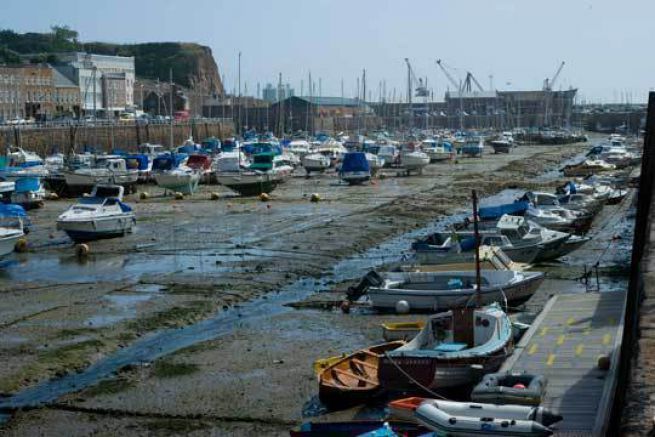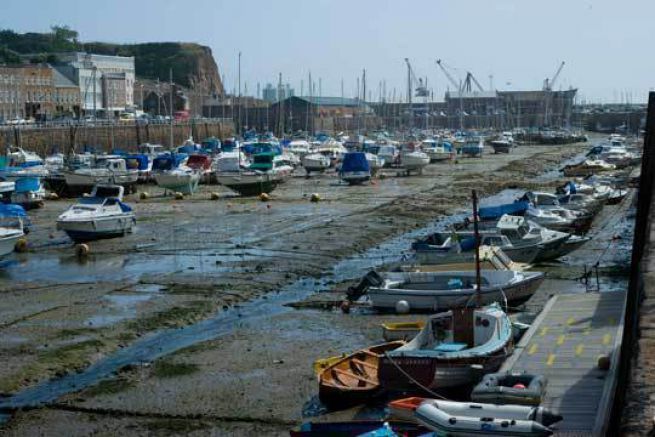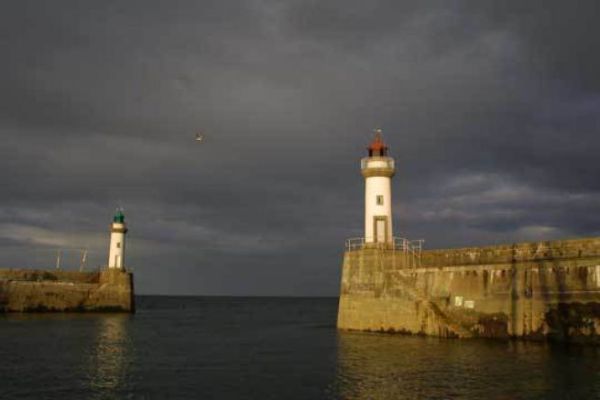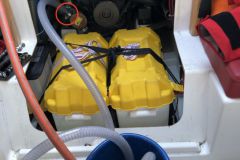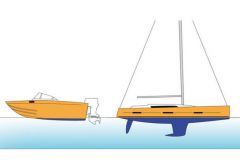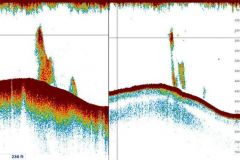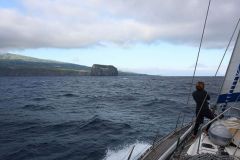Tide calculation is an interesting exercise that is important to understand before starting to navigate. If there are many sites that indicate the times and heights of tides (starting with the SHOM or Marée.Info), we explain the calculation from a tide directory (in this case the Bloc Marine) which gathers all the useful information.
A tide calculation is done in 6 steps that we detail here, with a numerical example in each case.
1 - Tidal coefficients
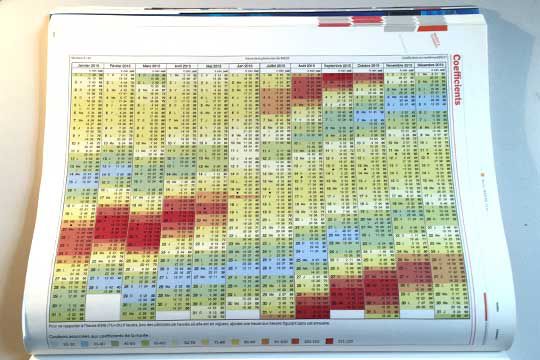
The tidal coefficient indicates the amplitude of the tide. It is a calculated numerical indication that oscillates from 20 for the lowest coefficients to 120. We say that we are in neap tide (ME) when the coefficient is below 70 and in spring tide (VE) when it is above 70.
2 - The tide directory
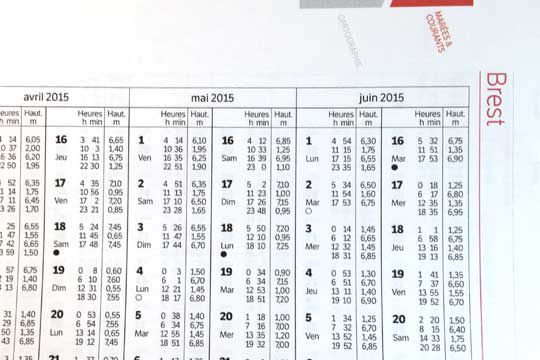
Find the reference port to which your navigation area is attached.
There are reference ports and attached ports. There can be a small difference in time and water level between the two. This difference varies depending on whether you are in spring or neap.

Example :
Morgat (port of Finistère attached to Brest)
There is a time lag of 5 minutes (VE high tide) to 20 minutes (VE low tide) and a water height difference of -40 cm (VE high tide) to -10 cm (VE low tide).
These values should be noted, as they will be used to modify the final calculation.
3 - The tidal range
In the tide directory, you can find your day of navigation. The tide times are indicated, but especially the water level.
The tidal range is the difference between the height of water at high tide and low tide.
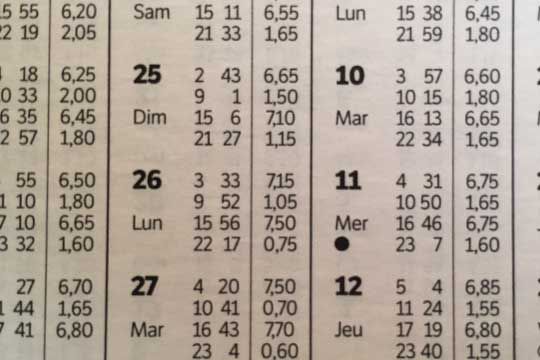
Example :
Sunday, October 25, coefficient of 89, i.e. spring water
- Low water at Brest: 1.50 m
- High water at Brest : 7,10 m
- Tidal range in Brest = 7.10 euros 1.50 = 5.60 m
Corrected for Morgat, the values are :
- Low water: 1.50 - 0.10 = 1.40 m
- High tide: 7.10 - 0.40 = 6.70 m
- Tidal range = 6,70 euros 1,40 = 5,30 m
4 - Tide time
The tide time is close to the time of the weather. But we specify the calculation by taking the hour of the low sea euros hour of the high sea that we divide by 6.

Example :
Sunday, October 25th
- Low tide in Brest : 09h10
- High tide at Brest: 3:06 pm
- Low tide in Morgat : 09h10 - 00h20 = 08h50
- High tide at Morgat: 15h06 - 00h05 = 15h01
- Time of the tide in Morgat: 15h01-08h50 = 6h11
- Tide time : 6h11/6 = 1h02
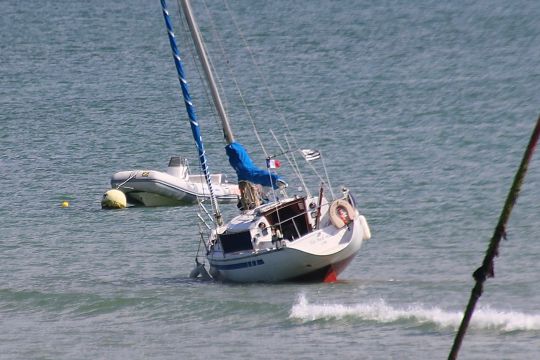
5 - The rule of twelfths
Over the period of the tide (about 6 hours) the ebb and flow do not run in a linear fashion. At the beginning of the tide, it rises (or falls) slowly. At the heart of the tide, it is the strongest. And at the end of the tide, it softens.
It is common to say that the water level evolves according to the rule of twelfths.
- Hour 1 1/12th
- Hour 2 2/12th
- Hour 3 3/12
- Hour 4 3/12
- Hour 5 2/12
- Hour 6 1/12th
To know the "twelfth" of its tide, we take the tidal range and divide it by 12.
Example :
Sunday, October 25th
Tidal range in Morgat: 5,30 m
Twelfth: 5.30/12 = 0.44 m
Hour 1 the sea rises by 1/12th or 0.44 m
Hour 2 the sea rises by 2/12ths or 0.88 m
Hour 3 the sea rises by 3/12ths or 1.32 m
Hour 4 the sea rises by 3/12ths or 1.32 m
Hour 5 the sea rises by 2/12ths or 0.88 m
Hour 6 the sea rises of 1/12th or 0,44 m
Thus the 4th hour of tide, the sea will have risen of 0,44+0,88+1,32+1,32 = 3,96 m
6 - Knowing the water level at a location on the map
On the maps, the zero is given for a coefficient of 120 (the highest coefficient that is never reached in reality). It is therefore the lowest of the lowest tides. According to the reading of a probe
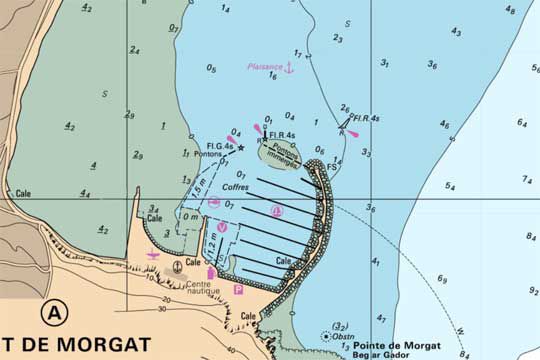
Example :
The 0.50 m probe at the exit of Morgat harbor will already be covered by 2.00 m of water at low tide.
Sunday 25 October in Morgat
Low tide : 8.50 am
Water height : 1,40 m
That is 0.50 + 1.40 m : 1.90 m
at the 4th hour of tide it will be :
08h50 + (4 x 1h02) = 12h58
The water level will be
1,90 + 3,96 = 5,86 m
This means that there will be 5.86 m above the 0.50 m probe at the harbor entrance.
